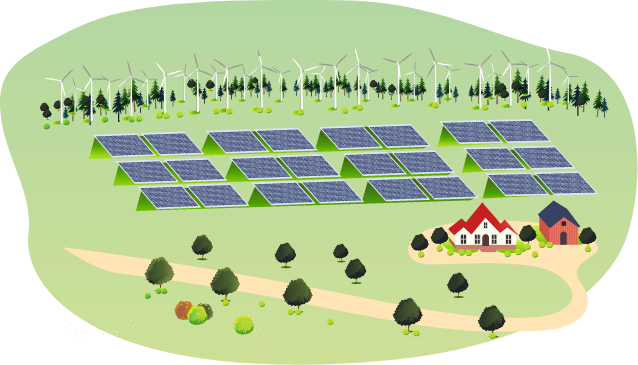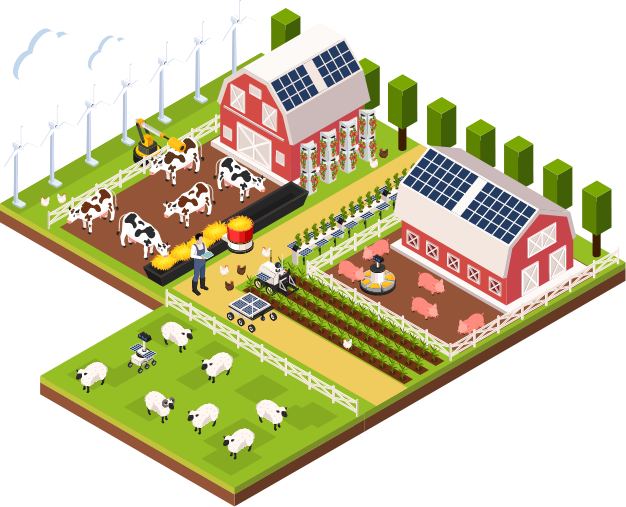Solar power stands out as the most effective method to combat climate change and achieve net zero carbon emissions. Installing solar panels on rooftops provides significant benefits, such as reducing indoor temperatures by 3-5 degrees Celsius and lowering electricity costs by shielding roofs from direct sunlight. Additionally, it extends the lifespan of waterproofing layers by redirecting rainwater away from roofs.
Currently, photovoltaic energy installations are broadly categorized into three main types: Roof-Mounted, Ground-Mounted, Dual-Use

Roof-Mounted Systems
This involves placing solar photovoltaic systems on rooftops of various buildings including residences, government offices, schools, and factories.

Ground-Mounted Systems
Suitable for large tracts of non-arable land, fallow areas, or saline soil, these systems utilize idle land to generate electricity and create additional income through power sales.

Dual-Use Systems
By combining solar power generation with agricultural activities on farmland, this type resolves land use conflicts while leveraging government subsidies to promote sustainable agriculture practices.
